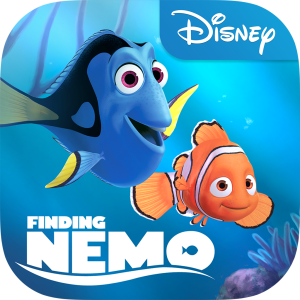
Pixar Animation Studios made a large splash at the summer box office on May 30, 2003 with Finding Nemo.
The theme of Finding Nemo forms through a father-son love story. Several components of the story help interpret the message of the film. One major element is the concern about Nemo’s short fin, a deformity that keeps Marlin worried. Stanton states: “[Nemo’s disability is] a metaphor for anything you worry is insufficient or hasn’t formed yet in your child” (Corliss). Parents become worried about a handicap in their child and think that the disability is a corrupt view of the parent. This movie can teach parents that there is no perfect father or child, like Marlin and Nemo. On Marlin’s journey, Marlin is set on finding his son when divers take Nemo; on his journey he meets the unforgettable Crush who is the complete opposite of Marlin, relaxed with parenting. Corliss explains, “When Marlin asks the sea turtle Crush how a father knows when his kids are ready to swim out on their own, the wise dude replies, ‘Well, you never really know. But when they know, you know- y’know?'”(Corliss). Parents can relate to Crush and Nemo’s devoted dad that children need to grow up and discover the world. The message of the movie is important for parents; the message is about letting go and getting back. According to Corliss, “Nemo’s fish-out-of-water plot was hatched back in 1992, when he visited Marine World in Vallejo, Calif. His feelings of protectiveness towards his own boy Ben inspired the father-son story” (Corliss). By looking at the views of Stanton, readers may see how he and other parents feel about the “letting go and getting back” policy. Even though parents may find the policy hard to follow, watching this movie can help relieve the hard way of stress by understanding the lesson of the movie. O’ Sullivan elucidates, “[Nemo’s]father is forced to enlist the aide of a beautiful stranger to decipher the only clue left at the crime scene, even while the pair narrowly averts such threats as a trio of predatory thugs foundering in a 12-step program” (O’ Sullivan). Through all of Marlin’s comical, action-packed, and nerve-racking encounters, he learns his lesson after gaining Nemo back, knowing when to hold means knowing when to let go.

A perfect cast comments the perfect movie. Dory needing an enthusiastic personality was matched with the perfect voice, Ellen DeGeneres. Ansen believes, “Ellen DeGeneres, hilarious and poignant, gives a tour de force reading” (Ansen). DeGeneres attracts a prodigious crowd to Finding Nemo. According to Holden, “Ms. DeGeneres infuses what could have been a one-note role with an irresistible enthusiasm and playfulness” (Holden). Without her reading, Dory would not have the same personality. Other characters are also very memorable. Michael O’ Sullivan observes, “Pixar’s attention to minute details of characterization—lobsters speak with New England accents, seagulls are mindless, yapping clones [fixate] on their next meal—pay off big time” (O’ Sullivan). These voices also bring in the full effect of the characters and movie, making the movie very comical.
Finding Nemo’s fame is an outcome of an unforgettable theme, breathtaking animation, and a comical and perfect-fitting cast. The paradox of love theme can relate to all parents and future parents. Furthermore, the spectacular and detailed animation can warrant for a second viewing and make people feel in a state of reverie. Finally, the cast produces a stunning success. This film is outstanding connecting to each person in the audience. Finding Nemo is a success to Pixar films and one must not resist seeing it!
Works Cited
- Ansen, David. “Freeing Nemo: A Whale of a Tale.” Newsweek. Newsweek, Inc., 2 June 2003. Web. 12 January 2010.
- Corliss, Richard. “Hook, Line, and Thinker.” Time. Time Inc., 19 May 2003. Web. 12 January 2010.
- Ebert, Roger. “Finding Nemo.” Rogerebert.com. Rogerebert.com, 30 May 2003. Web. 14 January 2010.
- “Finding Nemo.” Internet Movie Database. IMDb.com, Inc. Web. 27 January 2010.
- Holden, Stephen. “Film Review: Vast Sea, Tiny Fish. Big Crisis.” The New York Times. The New York Times Company, 30 May 2003. Web. 13 January 2010.
- McCarthy, Todd. “Finding Nemo.” Variety. Reed Business Information, 26 May 2003. Web. 12 January 2010.
- O’ Sullivan, Michael. “‘Finding Nemo:’ This Fish Story is a Keeper.” The Washington Post. The Washington Post Company, 30 May 2003. Web. 13 January 2010.
Read Also: Symbolism In The Great Gatsby

You must be logged in to post a comment.